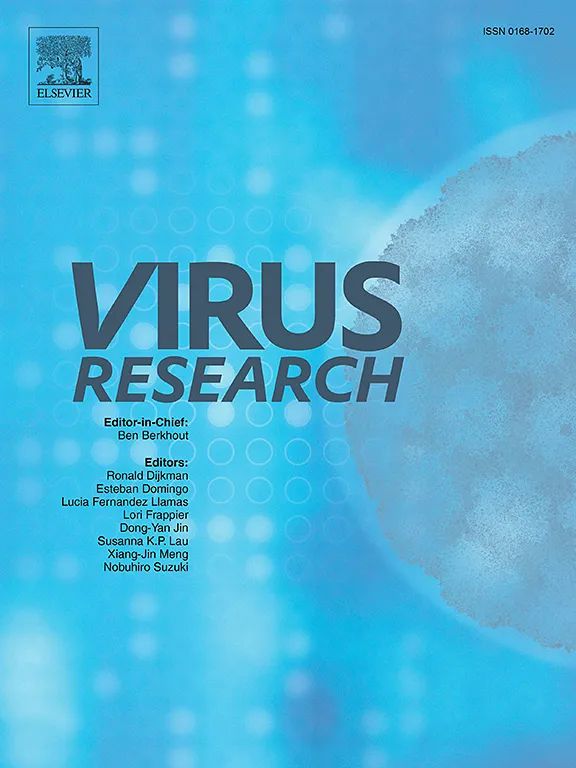了解高致病性甲型禽流感病毒 H5N1 在针鼹中的出现:一种进化方法。
IF 2.5
4区 医学
Q3 VIROLOGY
引用次数: 0
摘要
遗传支系 2.3.4.4b 中的高致病性甲型流感病毒(HPIAV)H5N1 已在全球不同地区的野生鸟类中出现,导致 7000 多万只鸟类死亡。当这些毒株扩散到鳍足类动物时,也出现了显著的死亡现象。要了解这些病毒向包括人类在内的其他哺乳动物物种传播的可能性,就必须对从鳍足类动物体内分离出的 HPIAV 进行详细的基因鉴定。为了深入了解这些问题,我们对从鳍足类动物中分离出的 HPIAV H5N1 2.3.4.4b 株进行了详细的系统发育分析。这些研究结果表明,在世界所有地区都发生过多次从鸟类向鳍足类动物传播的事件。高致病性禽流感病毒 H5N1 2.3.4.4b 株系不同基因的不同进化史导致了世界不同地区的针鲤感染病毒。从鳍足类动物身上分离出的欧洲毒株与从南美洲分离出的毒株代表了完全不同的基因系。从鳍足类动物身上分离出的所有毒株都具有家禽禽流感高致病性的特征。在所研究的所有针足类动物物种中的不同基因中都发现了氨基酸置换,这种置换以前曾被证明具有感染哺乳动物的适应优势。本文章由计算机程序翻译,如有差异,请以英文原文为准。
Understanding the emergence of highly pathogenic avian influenza A virus H5N1 in pinnipeds: An evolutionary approach
Highly pathogenic influenza A virus (HPIAV) H5N1 within the genetic clade 2.3.4.4b has emerged in wild birds in different regions of the world, leading to the death of >70 million birds. When these strains spread to pinniped species a remarkable mortality has also been observed. A detailed genetic characterization of HPIAV isolated from pinnipeds is essential to understand the potential spread of these viruses to other mammalian species, including humans. To gain insight into these matters a detailed phylogenetic analysis of HPIAV H5N1 2.3.4.4b strains isolated from pinniped species was performed. The results of these studies revealed multiple transmission events from birds to pinnipeds in all world regions. Different evolutionary histories of different genes of HPIAV H5N1 2.3.4.4b strains gave rise to the viruses infecting pinnipeds in different regions of the world. European strains isolated from pinnipeds represent a completely different genetic lineage from strains isolated from South American ones. All strains isolated from pinnipeds bear characteristics of a highly pathogenic form for of avian influenza in poultry. Amino acid substitutions, previously shown to confer an adaptive advantage for infecting mammals, were observed in different genes in all pinniped species studied.
求助全文
通过发布文献求助,成功后即可免费获取论文全文。
去求助
来源期刊

Virus research
医学-病毒学
CiteScore
9.50
自引率
2.00%
发文量
239
审稿时长
43 days
期刊介绍:
Virus Research provides a means of fast publication for original papers on fundamental research in virology. Contributions on new developments concerning virus structure, replication, pathogenesis and evolution are encouraged. These include reports describing virus morphology, the function and antigenic analysis of virus structural components, virus genome structure and expression, analysis on virus replication processes, virus evolution in connection with antiviral interventions, effects of viruses on their host cells, particularly on the immune system, and the pathogenesis of virus infections, including oncogene activation and transduction.
 求助内容:
求助内容: 应助结果提醒方式:
应助结果提醒方式:


